YTD Loan Originations
All U.S. Credit Unions | Data as of Dec. 31
Callahan & Associates | www.creditunions.com
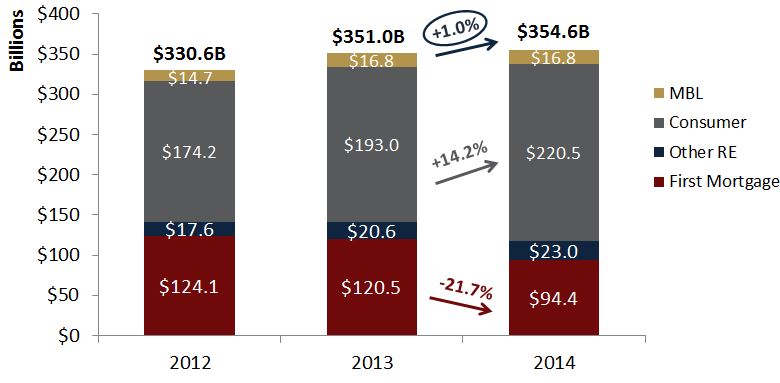
Consumer loan originations crossed the $200 million mark for the first time in history. Notably, these loans which include auto loans and credit cards tend to stay on the books of credit unions. The relatively short duration of these products offer credit unions more flexibility in pricing and can be beneficial for interest rate risk planning.
LOAN COMPOSITION
All U.S. Credit Unions | Data as of Dec. 31, 2014
Callahan & Associates | www.creditunions.com
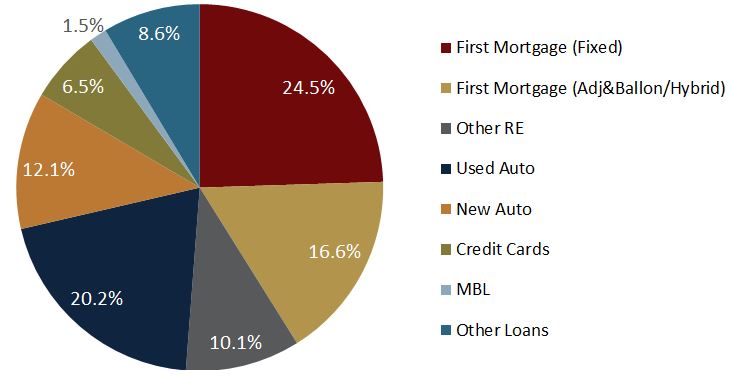
Credit unions in total have a diverse loan portfolio, with slightly more than half of the composition dedicated to real estate categories. Although not all credit unions actively participate in every lending category, many are entering new markets and diversifying their portfolios through loan participations.
YOY Growth by product type
All U.S. Credit Unions | Data as of Dec. 31
Callahan & Associates | www.creditunions.com
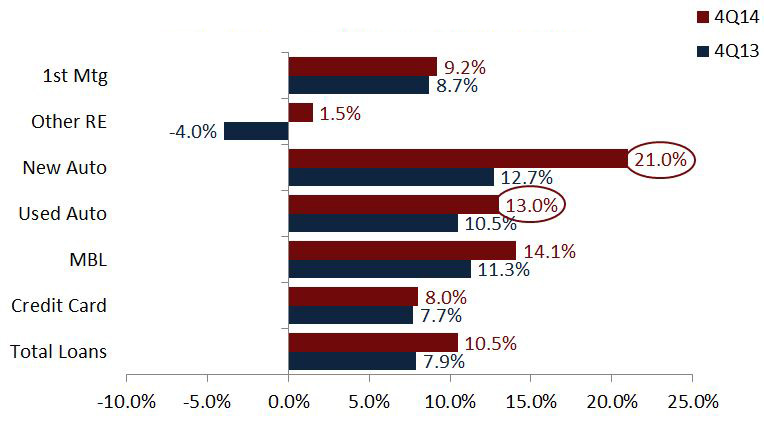
Every loan category posted stronger year-over-year growth compared to one year ago, and both new and used auto lending turned out double-digit growth. At roughly two-thirds of the auto portfolio, used auto loans are still the dominant force; however, as the automotive market rebounds nationally, increases in indirect lending have underpinned significant growth in new auto loans.
YOY Growth By Share product type
All U.S. Credit Unions | Data as of Dec. 31
Callahan & Associates | www.creditunions.com
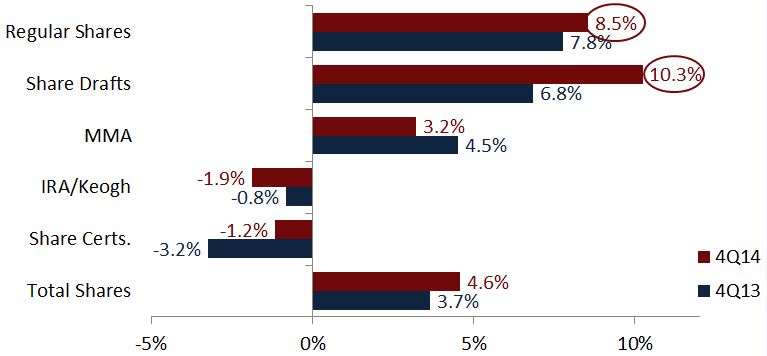
In 2014, credit unions faced with a declining deposit base outpaced by loan growth had to train front-line staff to sell deposits. The growth in regular shares and share drafts reflects the successful efforts by credit unions to increase their deposit base.
$ Net Share Growth
All U.S. Credit Unions | Data as of Dec. 31, 2014
Callahan & Associates | www.creditunions.com
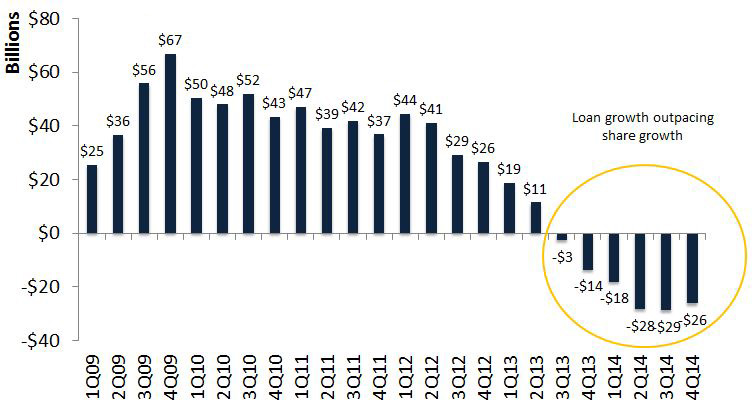
Loan growth surpassed share growth by six percentage points in 2014, and at 75%, the national loan-to-share ratio was the highest it has been since 2009. The amount of share growth minus the amount of loan growth net liquidity was negative at year’s end but has improved slightly from third quarter 2014. In the past year-and-a-half, net liquidity has declined under elevated loan growth relative to share growth.
Net Interest Margin vs. Operating Expense Ratio
All U.S. Credit Unions | Data as of Dec. 31
Callahan & Associates | www.creditunions.com
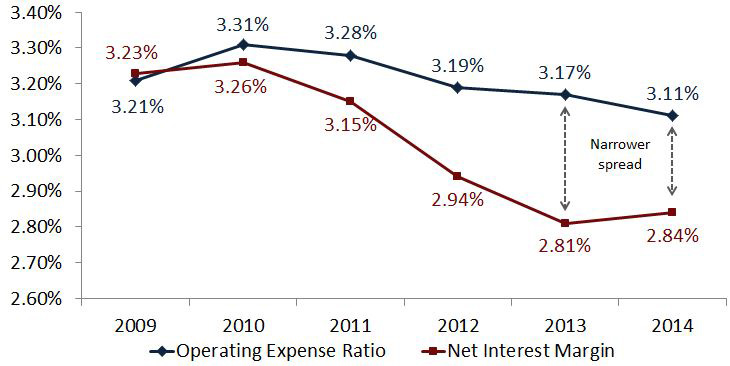
A combination of higher investment yields and a smaller decline in loan yields contributed to an uptick in the net interest margin in 2014. Additionally, credit unions have managed their operating expenses well, as evidenced by the closing gap between the operating expense ratio and the net interest margin.
Net Income & StabilizaTION Expense
All U.S. Credit Unions | Data as of Dec. 31
Callahan & Associates | www.creditunions.com
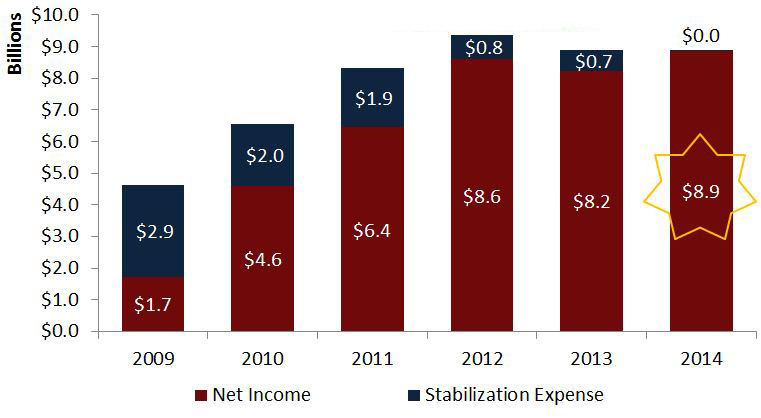
Credit unions reported a post-recession high of $8.9 billion in net income. This is largely the result of increased net interest margins and the lack of stabilization expenses.
* Source for all graphs: Peer-to-Peer Analytics by Callahan & Associates
